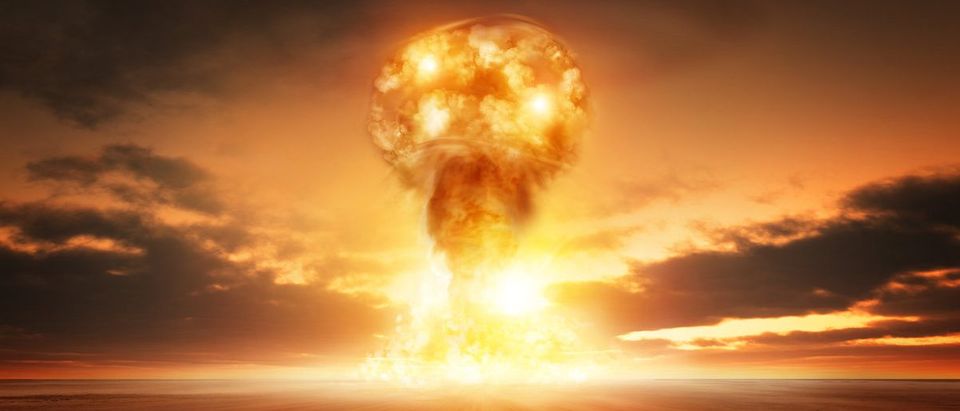The Department of Homeland Security issued a guide on how first responders can survive a improvised nuclear device (IND) attack in December, offering up some sobering tips on one of the worst possible disaster scenarios.
The guide gives advice on how to survive a 10 kiloton IND within the first 72 hours of detonation. DHS defined an IND as an illicit nuclear weapon bought, stolen or otherwise originating from a nuclear state or fabricated by a terrorist group from illegally obtained nuclear material. While it is similar to a so-called “dirty bomb,” an IND has the potential to be be much more deadly.
“There are likely to be tens or hundreds of thousands of casualties with serious traumatic injuries including severe burns, blindness, deafness, amputations, other blast injuries, radiation sickness, etc.,” stated the guide. “Responders will face the prospect of being overwhelmed by the public need and its concerns.”
A 10 kt explosion is 5 kt less than the size of the bomb dropped on Hiroshima, Japan, in 1945. About 140,000 people were killed within the first few months of that attack. A 10 kt IND has the potential to destroy most of downtown Washington, D.C., according to Nuke Map, a project by NuclearSecrecy.com.
According to the DHS guide, anything within a half mile of the IND explosion would be “completely destroyed” and unsafe to enter for at least three days. The chance of survivors would be unlikely. It also warned first responders to beware of radioactive fallout carried by the wind, which could cover an area up to 20-miles long.
First and foremost, it noted the importance of sheltering in place during a blast and warned against rushing in to the most damaged areas. The use of protective equipment to protect against high radiation levels is also considered a top priority.
DHS recommended first responders engage in a sort of triage, focusing on those outside of the explosion who are most likely to have survived. Those too close to the site of the blast would ostensibly already be dead or beyond help.
“Responders should assess the surrounding to determine if rescue measures are immediately needed or can wait until radiation levels can be accurately determined and the responders are formally dispatched through the Incident Command System,” said the guide.
While it would be difficult for a terrorist entity to create or acquire an IND, experts do not rule out the possibility considering the availability of fissile material. Charles Ferguson and William Potter noted in a paper for the Weapons of Mass Destruction Commission that “over the past decade a number of cases have been documented involving illicit trafficking in fissile materials.”
Send tips to russ@dailycallernewsfoundation.org.
All content created by the Daily Caller News Foundation, an independent and nonpartisan newswire service, is available without charge to any legitimate news publisher that can provide a large audience. All republished articles must include our logo, our reporter’s byline and their DCNF affiliation. For any questions about our guidelines or partnering with us, please contact licensing@dailycallernewsfoundation.org.


